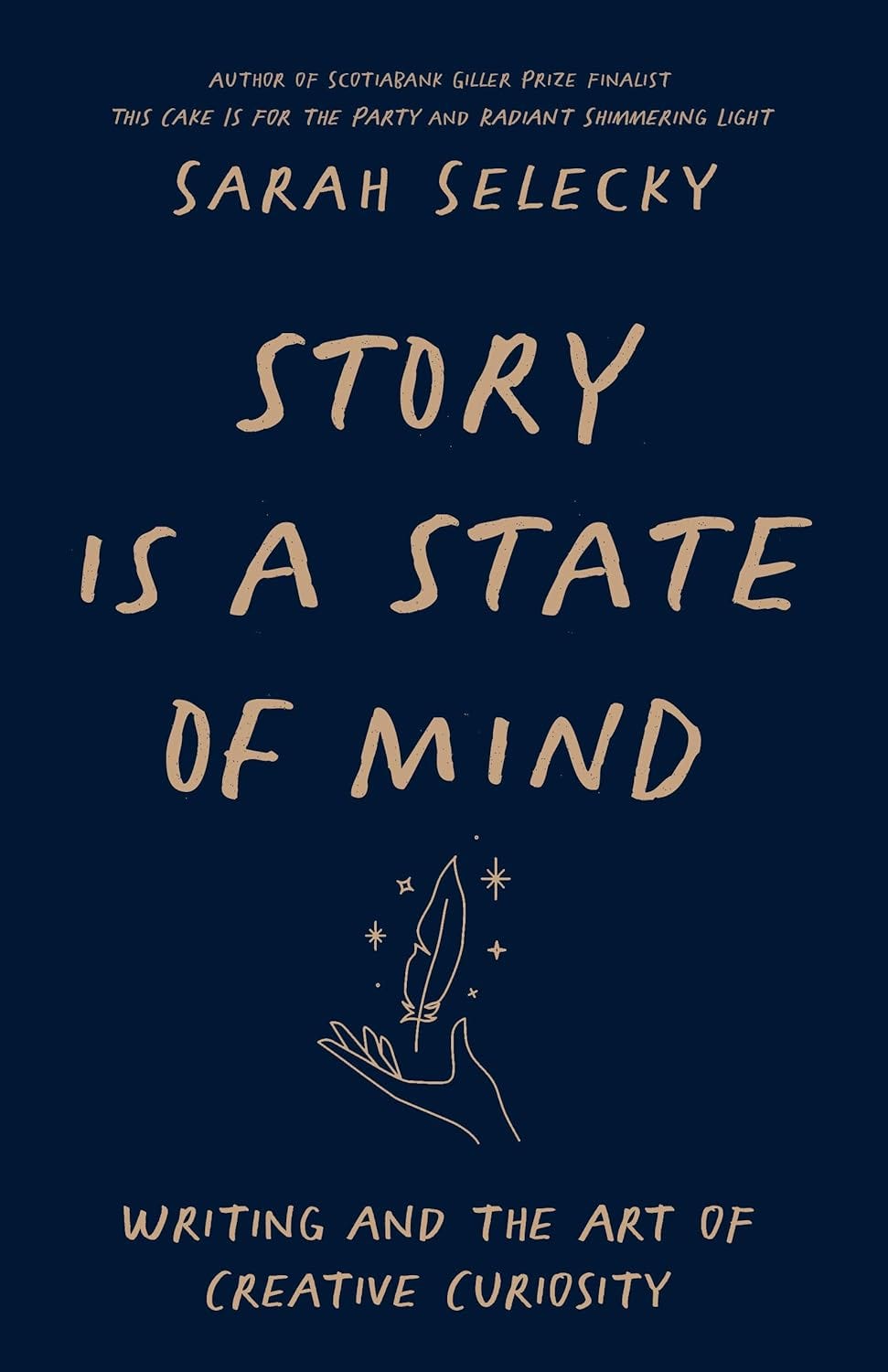Selecky Helps Writers Fine-Tune Their Mindset: Story is a State of Mind
A Review by Lisa Timpf
In Story is a State of Mind: Writing and the Art of Creative Curiosity, Sarah Selecky helps writers get in the groove by attending to their writing mindset. Deep noticing, allowing space for thinking, and nurturing a sense of curiosity are among the topics explored in Selecky’s book.
Some of the chapters, and the suggested exercises contained within, made me broaden my approach to writing. I tend to spend a lot of time in the rational side of my brain, and am also very results-driven, feeling guilty if I spend my writing time not working on a specific story, poem, or nonfiction work. Selecky’s advice to slow down, to take time to notice things, and to turn off the chatter in one’s mind encouraged me to test-drive some different approaches.
“Selecky also discusses strategies for getting the rational side of our minds to work in harmony with the intuitive side, and the importance of making space for curiosity.”
Among the concepts I found intriguing was the notion that the “inner critic” some of us are all too familiar with is trying to protect us (why, and from what, is something we need to figure out for ourselves). Selecky also discusses strategies for getting the rational side of our minds to work in harmony with the intuitive side, and the importance of making space for curiosity. Like many other authors of writing books, Selecky advocates the merits of keeping a journal. However, she provides a number of different exercises, so this approach doesn’t feel stale. Selecky includes exercises to help writers remember what it feels like to find joy in their writing.
One of the proofs of a how-to book for me is whether I find the advice applicable. The night I started reading Story is a State of Mind, I had a dream that led to a poem. Within the next few days, I got some ideas for how to improve a poem I’d had on the back burner for a number of years, wrote two new poems, and applied Selecky’s suggestion of writing in longhand to make progress on several nonfiction pieces. From that perspective, even without doing all of the exercises (which I plan to return to at some point) I found the book of value.
There’s a saying that we need to hear something many times before it sinks in. Some of the concepts outlined in Story is a State of Mind weren’t completely new to me. But Selecky’s book made some of those ideas click. Whether it was the way she said it, the reasoning behind it, or just that I’d heard it often enough, several of the notions discussed suddenly made sense.
In today’s go-go-go world, writers may sometimes feel like failures if they’re not churning out productive work 24-7. Story is a State of Mind suggests that sometimes, we need to slow down to move ahead. That sounds counter-intuitive, but as Selecky notes, the best writing advice often contains paradox.
While some of the advice is couched in terms that might be applicable to someone writing a novel, I found the bulk of it transferrable to other forms of writing. At the end of the book, Selecky lists other resources that writers might find useful, which is a helpful gesture.
Story is a State of Mind should be useful to writers who, like me, can get too much into their own heads. Selecky reminds us that some of the best writing comes in the liminal space between mind and body, and that metaphor is effective in part because it takes us toward the ineffable. Though it wasn’t Selecky’s specific intent in writing the book, Story is a State of Mind also strengthened my belief that there is something about the human experience that will never be replicated by AI writing models. If story is a state of mind, in Selecky’s world it’s a human mind in a human body that makes all the difference. If, among other things, you’re looking to strengthen and explore that connection, this might be the book for you.
About the Author
Sarah Selecky is the author of Radiant Shimmering Light and This Cake Is for the Party, which was a finalist for the Scotiabank Giller Prize and the Commonwealth Prize for Best First Book in Canada and the Carribean and was longlisted for the Frank O'Connor Prize. The New York Times called the stories "utterly fascinating." She also runs the Sarah Selecky Writing School, a creative community of over 10,000 writers from around the world. Raised in Hanmer, Ontario and Evansville, Indiana, Selecky now lives in Prince Edward County, Ontario.
About the Reviewer
Lisa Timpf is a retired HR and communications professional who lives in Simcoe, Ontario. Her poetry, fiction, creative nonfiction, and book reviews have appeared in New Myths, Star*Line, The Future Fire, and other venues. Lisa’s speculative haibun collection, In Days to Come, is available from Hiraeth Publishing. You can find out more about Lisa’s writing and artwork at http://lisatimpf.blogspot.com/.
Book Details
Publisher : Assembly Press (Jan. 7 2025)
Language : English
Paperback : 256 pages
ISBN-10 : 1998336018
ISBN-13 : 978-1998336012



